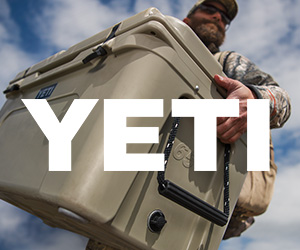 |
|
Keith Bryan, owner and President of Powell rods at his facility |
Introduction:
Powell rods has been a well known fly manufacturer for decades, but in
recent seasons the company's lineup of MAX bass rods have garnered
plenty of attention from freshwater fishermen. We sit down with Keith
Bryan the Owner and President of Powell rods to talk about what made the
company what it is today and what is in store for the future for the
fast growing rod manufacturer.
Zander: Keith, thanks for spending some time with us today. Let's start
at the very beginning. Please tell us about Powell, and the companyís history.
Keith Bryan: The company began in 1910 making and selling hand made bamboo fly
rods hand made by E.C. Powell in Marysville, CA. His bamboo rods were
unique due to the fact that their construction was semi-hollow for
lightness. In fact, it was so cutting edge that he applied for and
received a patent for that fly rod design. The company has always been
known for high end fly rod quality craftsmanship and that reputation
followed all the way through with the heritage and the progression of
the company as it progressed through to the fiberglass era with E.C.ís
son Walton Powell, then through to the graphite era with Waltonís son
Preston Powell in Chico, CA. They always tried to address the needs of
the fisherman.
After many years as a small family business the Powell family made
a decision to aggressively seek outside investment. This went on for a
few years and finally, in or around late 1996 and 1997 the Powell family
secured a partnership with a very successful businessman and avid
outdoorsman who has a deep passion for fishing. He was able to bring a
lot to the company, in terms of investment, manufacturing equipment,
graphite, other materials, manpower, salaries, computer systems and much
much more.
In 1998 a new and much bigger state of the art facility was secured
in Sacramento, CA. and the company moved. The company spent hundreds of
thousands of dollars custom tailoring this facility to fit the needs to
make rods and to have its own research and development facility. Once
that was done the company hired two rod designers who had many years of
rod design experience from other companies and a couple other
individuals with vast knowledge within the industry. They had vast
knowledge of how to make the right rod actions for todayís markets, in
all markets, fly rods, bass rods, ocean rods, etc. We had a wealth of
experience in rod design and development, we had numerous experienced
rod makers and assemblers and we used good fisherman to test the rods
that were being designed by us to ensure that these ideas would hold up
under the toughest conditions they could put them through.
 |
|
The current
MAX series as we know it is widely distributed |
I was one of the first new employees hired to sell the fly rods to
dealers and there is where I began to learn about rod design and
development and who the real heroes are behind the scenes of this very
difficult discipline. I began to work very hard in understanding the rod
design and development aspect to help me articulate to customers what
set us apart from our competitors from a sales perspective. One of the
key people brought in is a man named Woody Wood. He was brought into Powell in 1999 to help with rod design and development and to
run the manufacturing part of the business. Woody now works in the
industry as a territory manager for one of the finest sales rep groups
in the U.S. and today is still a good friend of mine. As we began to
work together in product development we began to make fly rods together
and bass rods behind the scenes just using some of the same fly rod
components and thread wraps and color schemes that Woody came up with,
which ultimately we use today, thatís pretty cool. Eventually in late
2000 a man by the name of David Myers was hired to consult for Powell.
David was brought in to develop high end, high performance fly and bass
rods and was instrumental in the early success of the Fenwick rod
company back in the day when Fenwick was without question the market
leader. Dave developed the Tiboron Fly Rod series for Powell which was
an instant winner and he was instrumental in the initial roll out of
Powell manufacturing bass rod blanks as well. In fact, David Myers is
the one who referred me to our current off shore manufacturer because he
knew that this company who has been building high end bass and fly rods
for nearly 35 years would fit the high quality and high performance
product needs of Powell. Towards the end of 2001 David Myers had
completed his consulting commitment and I was now running the company. I
began making bass rods that a few fishermen were using and liking in
fact, one fisherman even used these rods to win a big tournament in
2002. I felt that I had something going and just needed to relocate the
company decided to move my manufacturing offshore and keep a little
research and development facility up in Washington state, which we still
work with today on some projects, and now we have a very nice
distribution center to house our inventory and meet all of our customers
needs.
In the winter of 2002 I purchased Powell through a management
buyout and began to move our manufacturing equipment to various
locations, sell off the equipment we would never use and I moved the
company closer to my home in Novato, CA. I was commuting to Rancho
Cordova everyday and was tired of driving 95 miles one way everyday for
two years. During 2001 to 2003 I actually came up with a full rod line
under the name of another company and had some help of Dave Rush which I
founded by the name of Perforce. Initially, I wasnít going to use the
Powell name because of the rich fly rod tradition, but in the end I
ended up deciding to extend the brand into the bass fishing arena and
used many of these rod model designs as the spring board into this
market. I ended up using many of those blank design concepts, handle
designs and thread color schemes that we developed at the Powell factory
in Rancho Cordova with many improvements, with newer cutting edge
materials for todayís market. I had some help from Gary Dobyns adding a
few bass rods in the current product line but mainly, he helped us get
into a few stores in the west and one or two stores out of state. In
2005 Powell attended the ICAST show to launch the new bass rod line into
the market. I then focused on selling and servicing the product in the
west and nation wide. So far so good, but we have a long way to go
because not all people even know us yet, but thankfully there are many
that do, and Iím just thankful to be contributing and working in an
industry that I love.
 |
|
Early Powell and Perforce bass rod prototypes |
Zander: Let's turn our attention to a normal day in the office, can you
walk us through one?
Keith Bryan: Not much has changed except I now have additional personnel to help
me do the different jobs; therefore I assist many different departments
during the day. A regular day at the office begins at home with a large
cup of black coffee at 5:00 am.
∑
I check my emails and I will communicate with our overseas
customers to ensure that their business needs are met.
∑
After the international calls from home I will communicate with our
east coast dealers to ensure that we accomplish our combined business
objectives.
∑
I get to the office at 8:30am and begin to look over the completed
shipping orders from the previous day.
∑
Then I organize and prioritize all new orders that have been
received from the day before and I continue to follow those as they are
integrated into the process.
∑
I prioritize all warranty claims that have been received and
continue to follow those as they are integrated into the process.
∑
I look at orders on hand and inventory on hand to ensure that we
are on track to meet our goals and try and see where we might be
deficient.
∑
If the phone rings and everyone is busy, I pick it up and deal with different customer service scenarios trying to provide
adequate answers to customerís questions. Or sometimes itís a dealer on
the phone placing an order, and other times, there will be a new dealer
inquiring about becoming a new retailer to sell Powell.
∑
The phone rings again and if everyone is busy, I answer it to help
out our customer service department as we are absorbing many phone calls
on a daily basis plus, I always try to answer or have our customer
service department answer the phone before it rings three times, thatís
just the way I was trained from some great mentors that I learned from.
∑
I talk with current dealers ensuring that we are doing a good job
for them, or to see if they need anything, ask to see if there are areas
that may need improvement, see if they have plenty of brochures, decals,
etc.
∑
I receive perhaps 10 phone calls a day and roughly that many emails
from people who want to be on our pro staff, wanting to know what our
requirements are to sponsor a fisherman.
∑
I will assist the shipping department and help pull and ship orders
as we are now in a state of shipping out new orders on a daily basis.
∑
I work with our marketing people ensuring that our catalog and our
website are going to be designed and ready for ICAST, and thatís a very
big project right now.
∑
I am constantly looking at new materials and new components staying
current and always evaluating new opportunities.
 |
|
Keith gears up
for a tournament |
Zander: Who do you view as your primary competitors and what do you feel makes a
Powell rod unique and special?
Keith Bryan: You know, I look at us first. Because if I am taking care of the
home front then I need not worry about what other companies are doing.
Now, thatís not to say that I donít look at all companies to see whatís
happening in the industry because I do, but, I pretty much stay in touch
with whatís happening and I do my own thing. I find that for me if we
focus on our customers needs and listen to them plus a few key people
that I surround myself with, we typically do what we need to do so our
customers get the benefit. What I feel makes us unique and special is
that we are able to utilize our proprietary lightweight ďMaxumfiberĒ
material which is an ultra high modulus light weight material which
enables our rod design engineers to design rods that are very light,
well balanced, quick dampening, while not compromising durability.
Additionally, because of our combined large volume production in bass
and fly rods we are able to lower our production costs and pass on that
savings on to the end user which gives customers the finest high
performance products our industry has to offer at great prices.





















